

Carpenter's Hall

Carpenter's Hall
Carpenters' Hall — where the First Continental Congress met in 1774. This landmark building was erected between 1770 and 1774 by the Carpenters' Company, the oldest builders' organization in the United States (formed in 1724). Carpenters were architects as well as builders in those days, it should be noted.
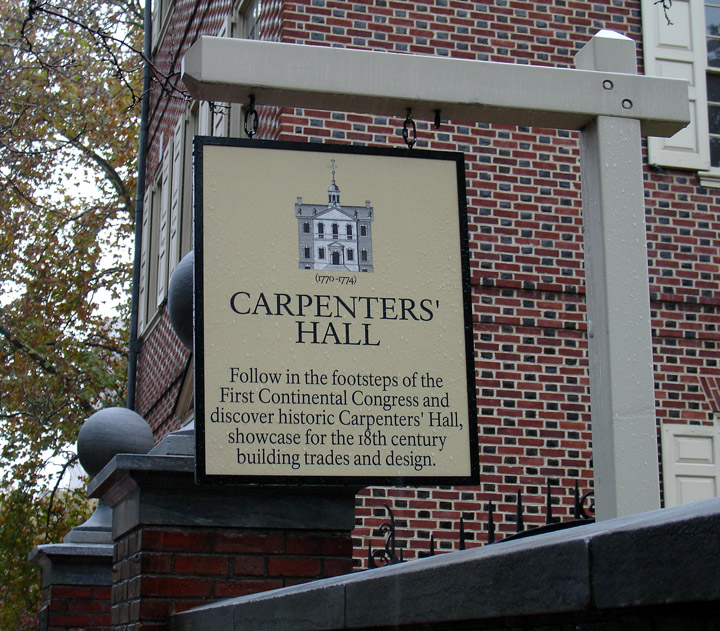
The Company published a book of rules and prices for its members in 1786.
Articles and Rules was also a pattern book, and its use was restricted to
members of the Carpenters' Company who faced expulsion if they showed it to
outsiders. There is an amusing story of Thomas Jefferson's writing for a copy of
the book in 1817, but even the former President — an amateur architect — was
denied access to the secrets of the Carpenters' Company.
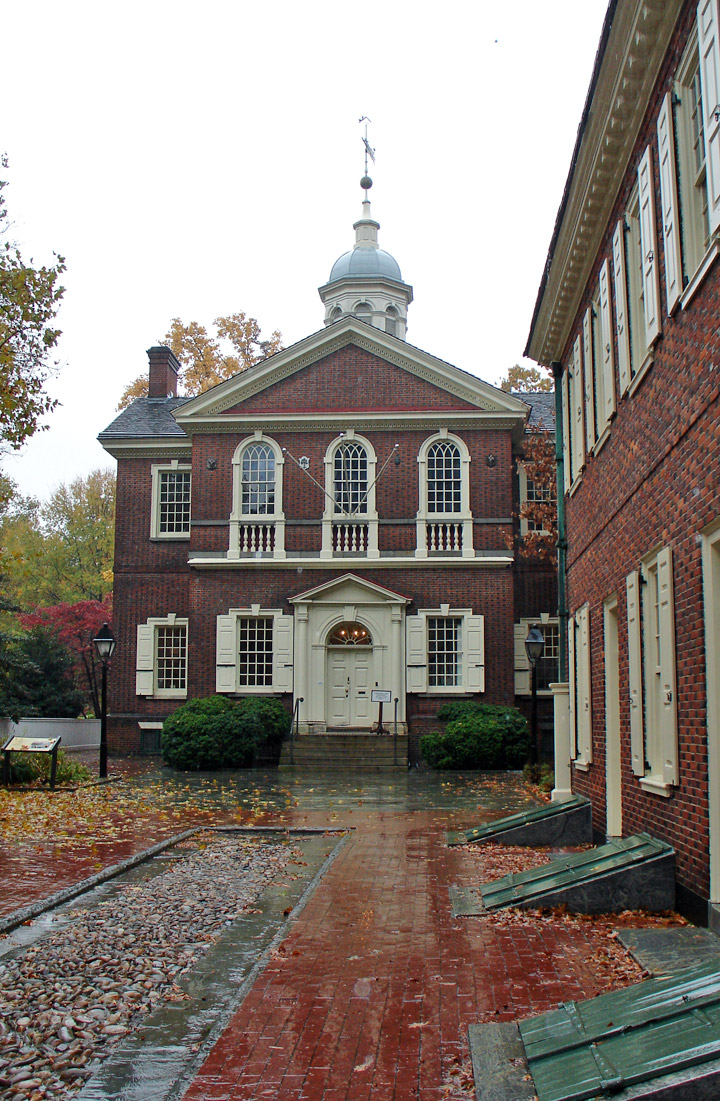
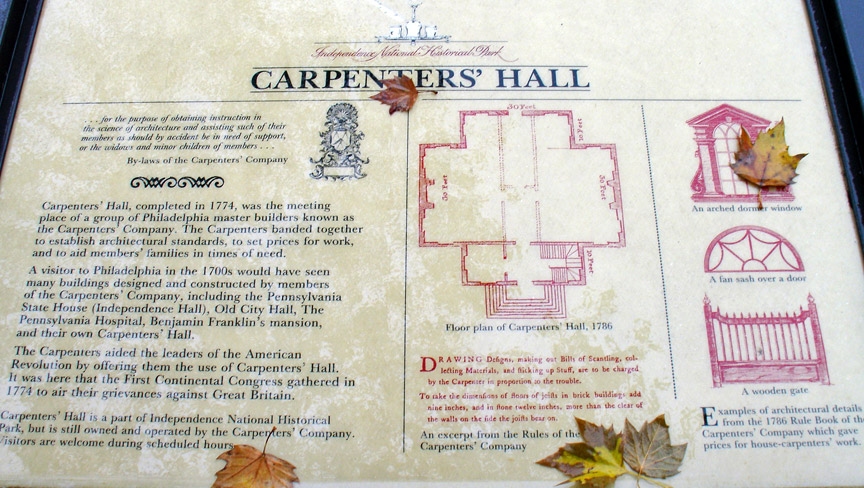
Carpenters' Hall has always stood out architecturally. Its proportions are
perfect; it has a sense of balance, of time and place, and it was designed to
endure. The Carpenters' Company still owns and maintains the building and holds
meetings here. From September 5 to October 26, 1774, the First Continental
Congress met in the eastern half of the bottom floor. Robert Smith, who designed
the building for use as a guild hall (restored in 1857, and opened to the
public), was a member of the Second Continental Congress in 1775, and Samuel
Rhoads of the Carpenters' Company was a delegate to the First Continental
Congress. Note the top-right window — That's where the Independence Hall
Association's offices are!
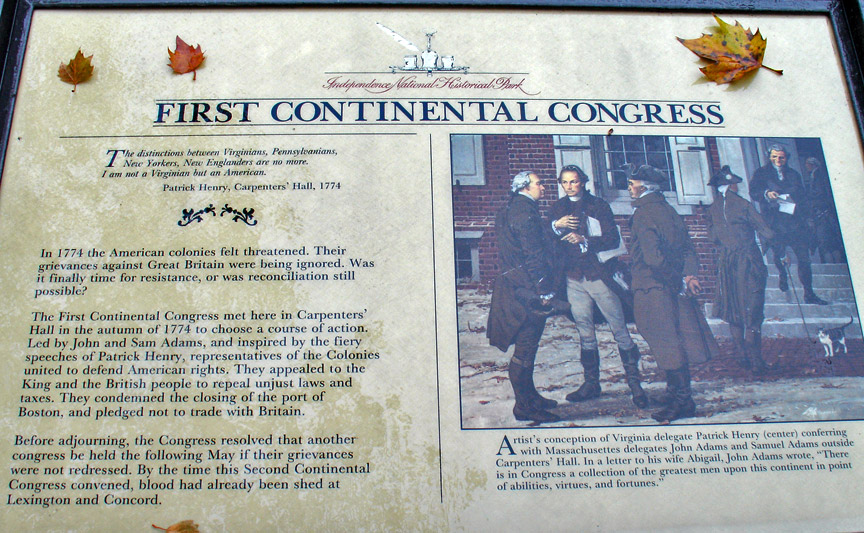
Carpenters' Hall was just completed when in September 1774 it found itself host
to the First Continental Congress which met to oppose British rule.
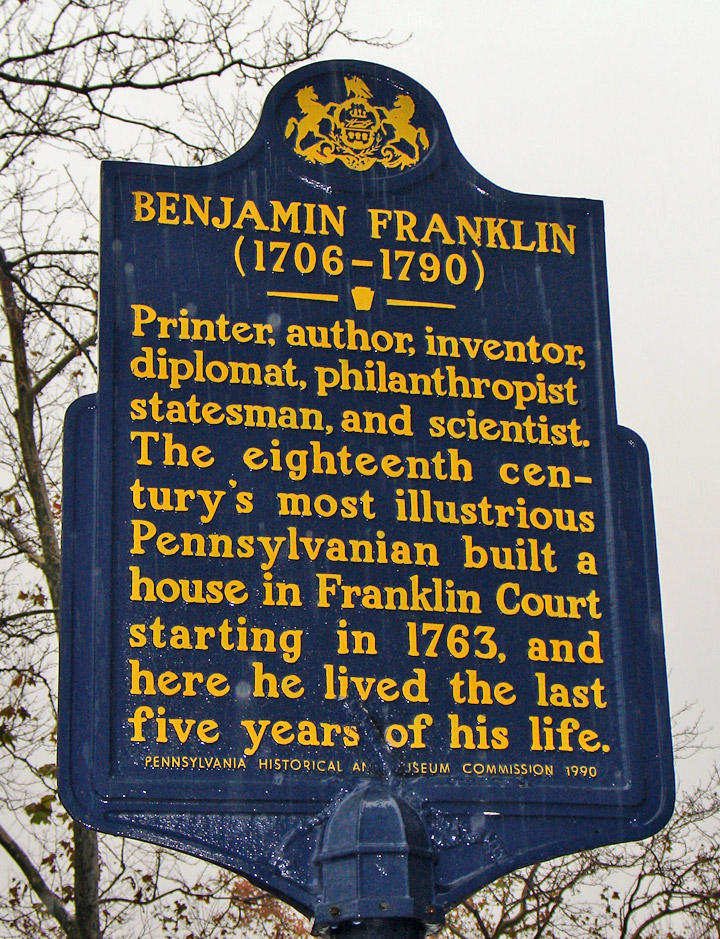
When Benjamin Franklin needed an architect to build his house, he turned to
master builder Robert Smith of the Carpenters' Company. Smith not only belonged
to the Carpenters' Company — he designed their headquarters, Carpenters' Hall.
Founded in Philadelphia in 1724, the Carpenters' Company was organized to share
information about the art of building, determine the value of completed work,
hone architectural skills, and help indigent craftsmen. Simulating the trade
guilds of 18th century England, the Carpenters' Company has held regular
meetings for over 275 years, making it the oldest trade guild in the country.

model of the building of Carpenter's Hall
Carpenters of the Colonial Era were architects as well as builders. The Company published a book of rules and prices and architectural designs called Articles and Rules in 1786. Only members of the Carpenters' Company were allowed to see the book. If a Carpenter showed it to an outsider, he would face expulsion. It's been said that Thomas Jefferson, the ex-President, was rebuffed in his attempt to obtain a copy of the book in 1817.
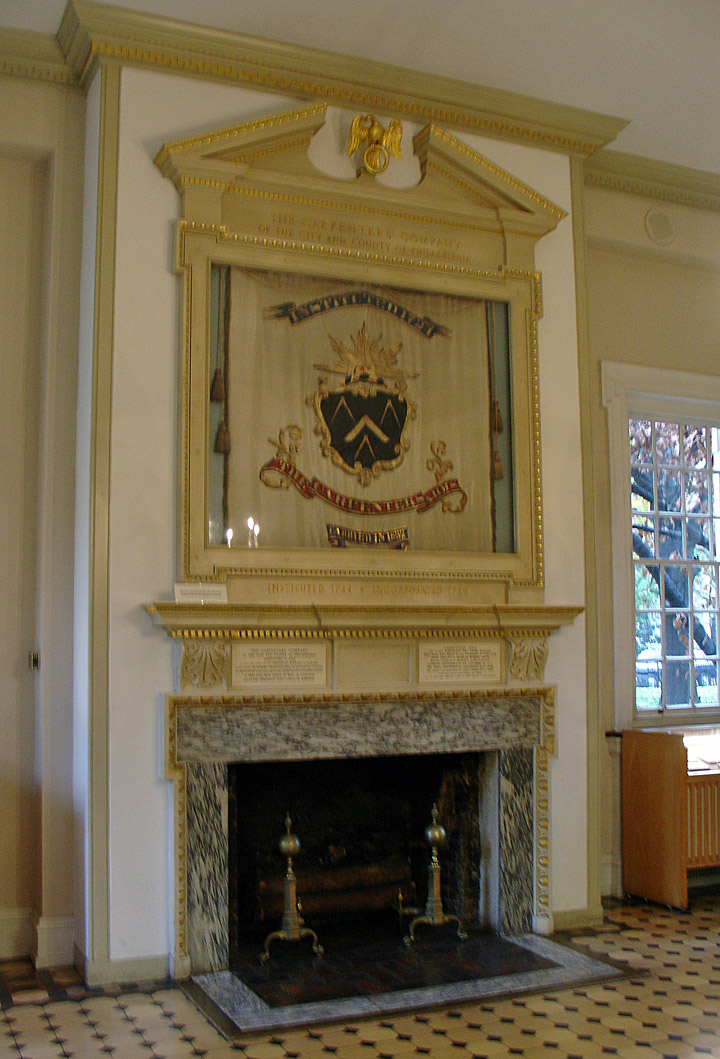
Located in the hub of colonial and capital Philadelphia, the Carpenters often
found themselves in the center of political activity. This building housed the
seven-week session of the First Continental Congress that met in 1774. Why, one
might ask, did they not meet at the State House (Independence Hall) just a block
away? The State House was perceived to be a hive of Tory sympathizers. In fact,
some members of the Royalist press even suggested that the necks of the
Revolutionary insurgents "might be inconveniently lengthened" if they did not
desist in their activities.
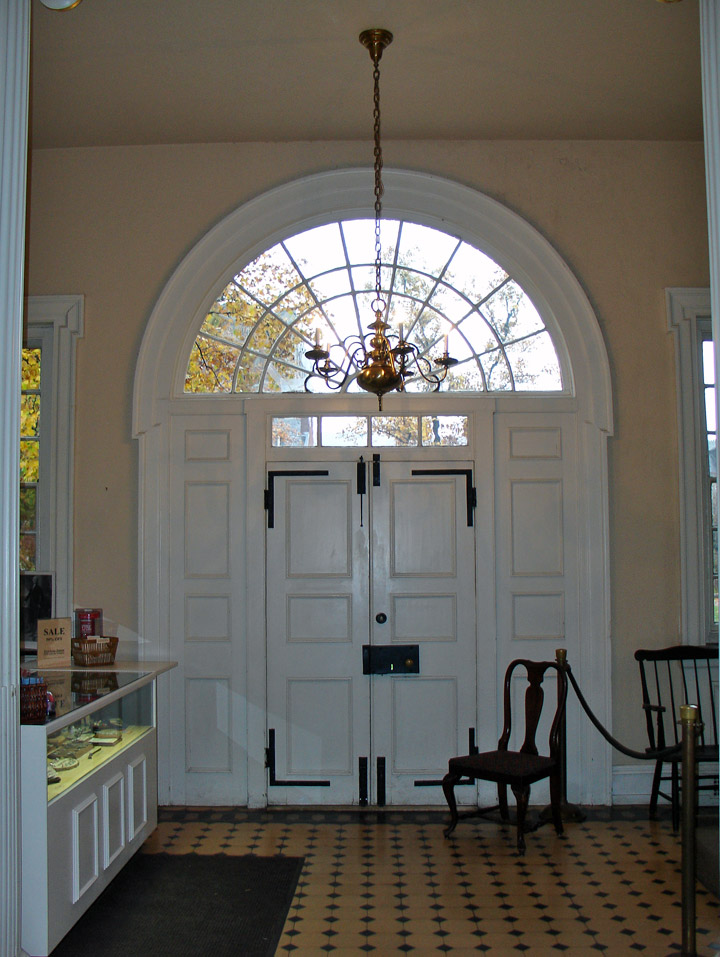
Palladium windows over the double doors
Carpenters' Hall also served as the headquarters of the First Bank of the United States in 1791. Others to occupy the venerable rooms include: the Bank of the State of Pennsylvania, United States Custom House, Franklin Institute, Society of Friends, the United States Law Office, the Apprentice's Free Library, the Second Bank of the United States, and the Philadelphia Auction Market.

Although pleased with their success in renting space in their building, they
were being squeezed out, so they built New Hall next door for their needs.
However, no sooner was it completed than Secretary of War Henry Knox moved
himself and his staff to the new building.
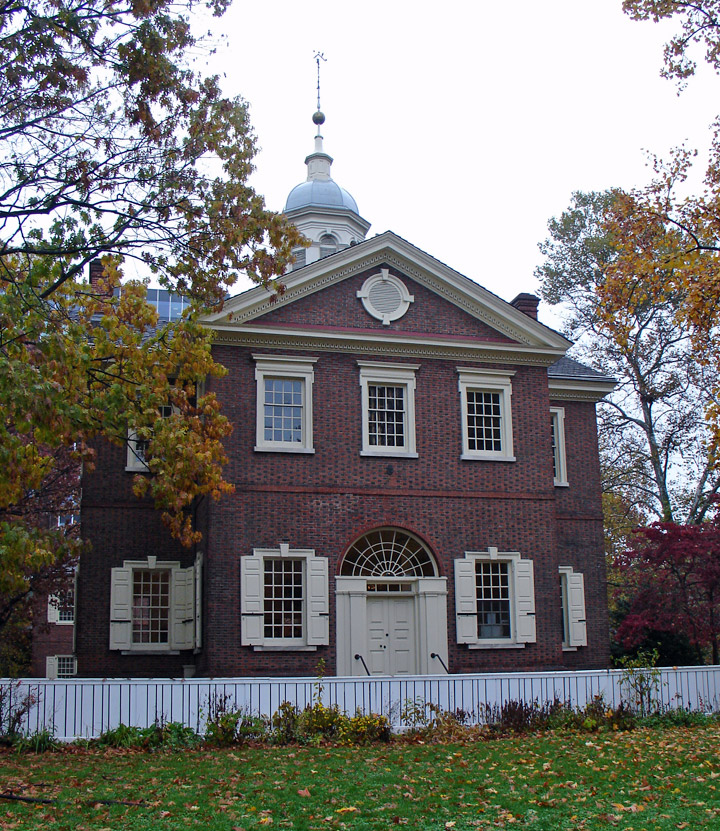
pedimented doorway
Architecturally, the building is in the form of a Greek cross. The pedimented doorway with Doric detail is gracious and welcoming. Three Palladian windows line the second floor under which are stone balustrades. The belt course (band separating the floors) is unusual in that it is outlined in wood instead of brick. At one time the gable over the windows contained the words "The Company Constituted 1724." In between the words "company" and "constituted" was the Carpenter's escutcheon. Underneath that read "Carpenters' Hall" in large letters.
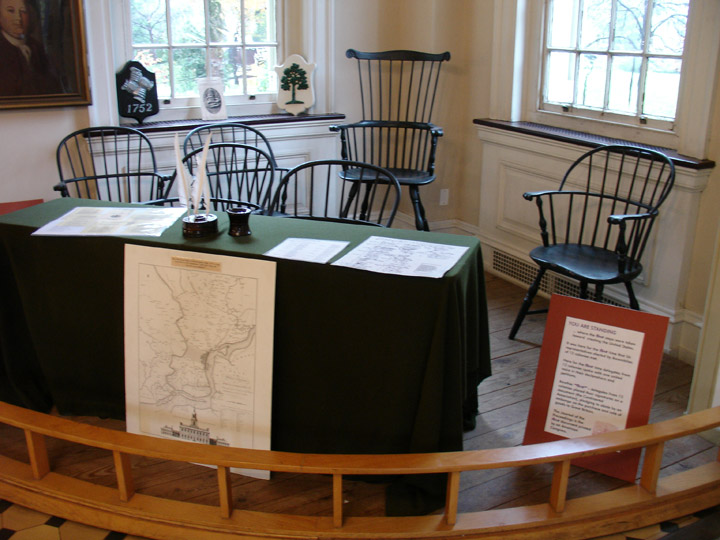
Windsor chairs used by the members of the First Continental Congress
Inside the Hall eight Windsor chairs used by members of the First Continental Congress are on display. Also displayed are early carpentry tools. Don't miss an opportunity to see a remarkable confluence of history and architecture.
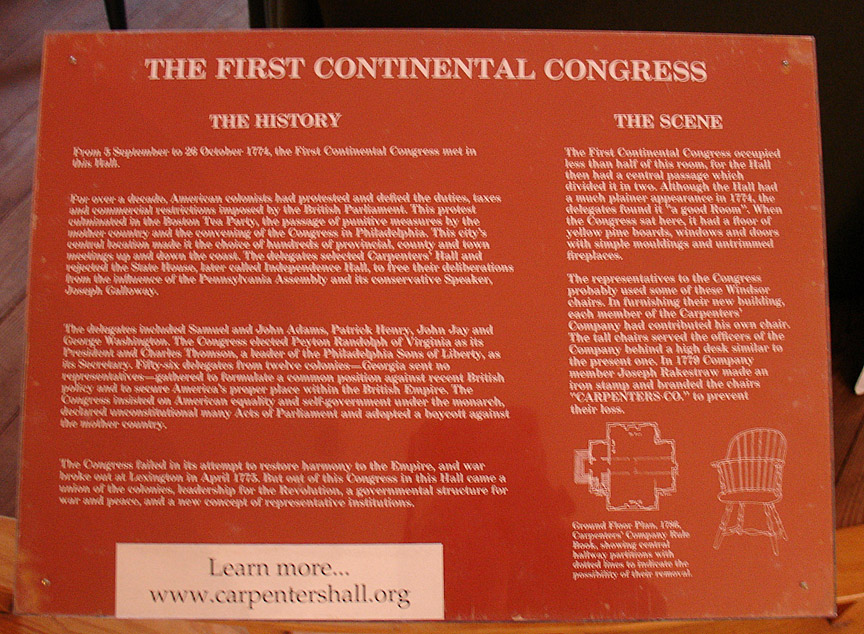
In attendance at the First Continental Congress here were George
Washington and John Adams and the more well-known (at the time) Samuel Adams and
Patrick Henry. (Benjamin Franklin was in England at the time.)
The Convention adjourned on October 26, 1774, resolving that another
Congress would be held in Philadelphia in May, "unless the redress of
grievances, which we have desired, be obtained before that time."
Here, Patrick Henry said, "I am not a Virginian, but an American." A few
months after the close of the Convention, Henry said, "I know not what course
others may take, but as for me, give me liberty or give me death!" in a speech
to the Virginia Convention back in Richmond.
In 1857, the Carpenters' Company chose to restore and preserve this building as a historic landmark.
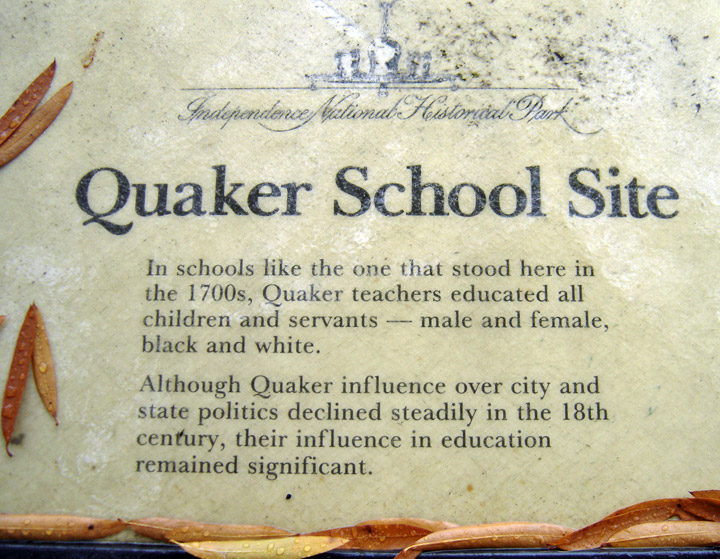
In 1955, the Independence Hall National Historical Park was making plans
to restore and rebuild the area around Carpenters' Hall. Excavations uncovered a
pornographic pipe tamper (used by 18th century smokers).
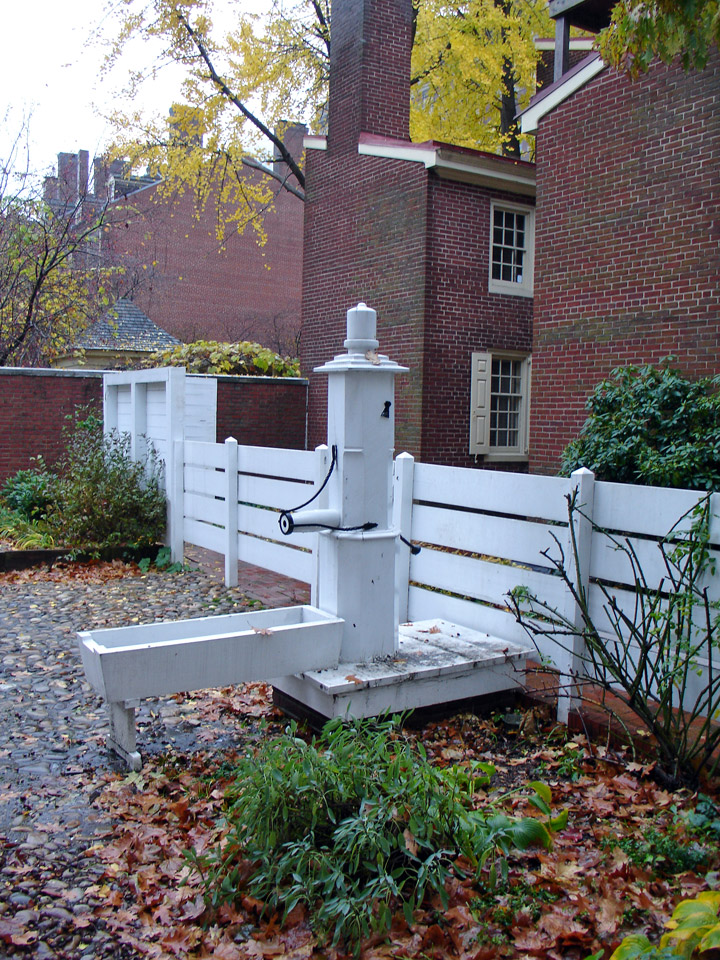
Pump in Old Town